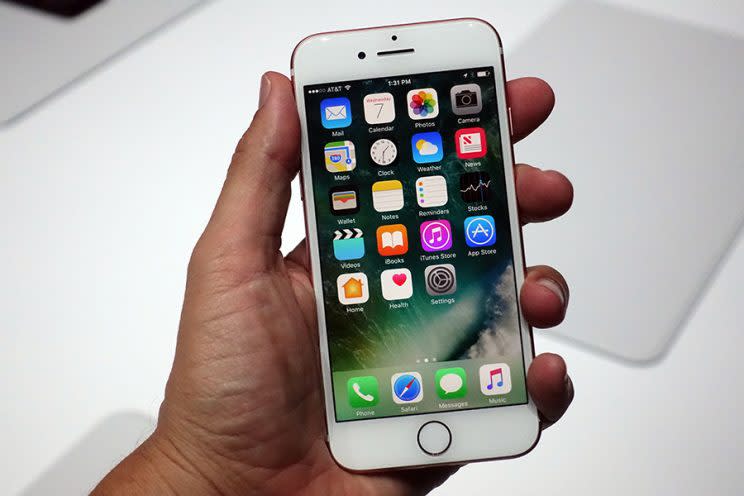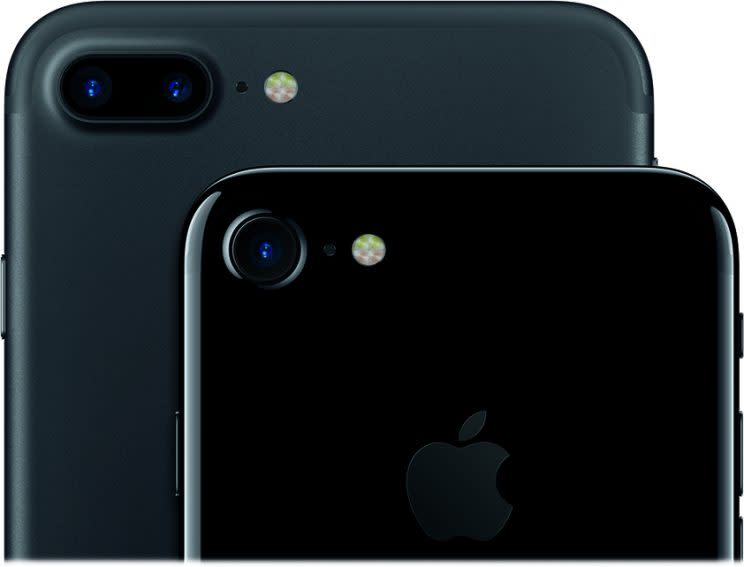iPhone 7 sales could make or break Apple's earnings

Apple (AAPL) will announce its earnings on Tuesday, and all eyes will be on sales of the new, and arguably underwhelming, iPhone 7 and 7 Plus. The key question to be answered is: Have consumers decided to upgrade to the Apple’s latest phones, or are they waiting for what is expected to be a significantly upgraded iPhone 8 or 7s?
The iPhone is Apple’s most important product, so any slip in sales is problematic for the company. The company generates roughly 60% of its revenue from iPhone sales.
Here’s one good sign: Analysts largely seem to believe consumers have shown more interest in the iPhone 7 Plus than the iPhone 7. That should benefit Apple, as the iPhone 7 Plus offers a higher profit margin than the smaller, less expensive iPhone 7.
Spending the extra cash on the iPhone 7 Plus also makes sense for consumers, as the phone’s camera features a secondary lens that lets users zoom in on their subjects. That’s a genuinely worthwhile upgrade, since zooming without a secondary lens often turns a photo into a blurry, pixilated mess.

In an analyst note, RBC Capital Markets’ Amit Daryanani and Mitch Steves point out that a RBC study found consumers showed 7% to 8% more interest in the Plus model this year than last year.
Of course, the iPhone 7 and iPhone 7 Plus might not offer enough in terms of new capabilities or features to incentivize people to go out and buy them. Outside of the fact that the iPhone 7 and 7 Plus are water-resistant and have improved cameras and screens, there isn’t much that makes them worth the upgrade. If smartphone shoppers feel the same way, then Apple could be in a bit of trouble.
Even if interest in the iPhone 7 and 7 Plus is high, there’s still a fear that sales could begin slowing in the coming months due to the larger smartphone industry’s struggles, Barclay’s analysts Mark Moskowitz and Daniel Gaide said in a research note.
“The tone among supply chain participants appears cautious,” the two said. “It has been suggested to us that late 2016 could be similar to late 2015 when smartphone builds fell precipitously. It will be important to monitor this potential risk of a year-end stall-out and whether there are bigger challenges — further lengthening of replacement cycle or disruption by smaller vendors.”
Through Q1 and Q2 2016, Apple has seen year-over-year declines in iPhone revenue of 18% and 23%, respectively. This, quarter, however, Phone revenue will decline 14% versus the same quarter in 2015, according to FactSet Earnings Research analyst John Butters.
That said, Apple could catch a break thanks to Samsung’s recent recall of its Galaxy Note7. That phone, which is a direct competitor to the iPhone 7 Plus, has been pulled from the market completely due to its propensity to catch fire. With the 7 Plus’ main competition out of the game, some consumers may opt for the Apple device.
Outside of iPhone news, it would also be interesting to see if Apple finally decides to break out Apple Watch sales into its own category. In the past, the company has decided against doing so, which gives the impression that the product simply isn’t selling well enough. With the second-generation Apple Watch and Apple Watch 2 now on the market, breaking the devices out would better help investors determine if the product line is a success or floundering.
Apple’s biggest blind spot, however, is its Mac line. The company hasn’t given its MacBook Air or MacBook Pro series of laptops a significant facelift in years. What’s more, they still rely on nearly outdated processors compared with Windows laptops, which are running newer, faster chips.
On the flip side, Apple is expected to debut new Mac desktops and MacBooks during an event on Thursday, which could help reinvigorate the company’s laptop and desktop sales next quarter.
More from Dan:
Email Daniel at [email protected]; follow him on Twitter at @DanielHowley.
